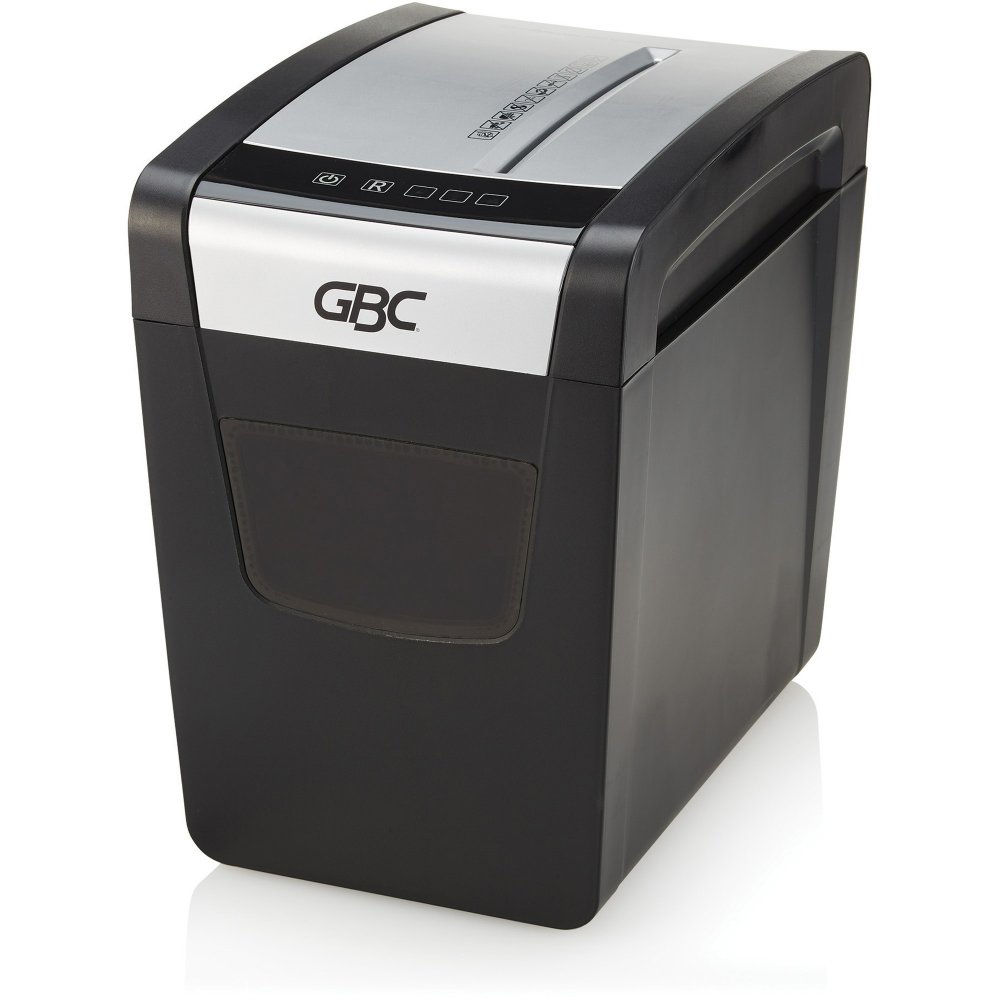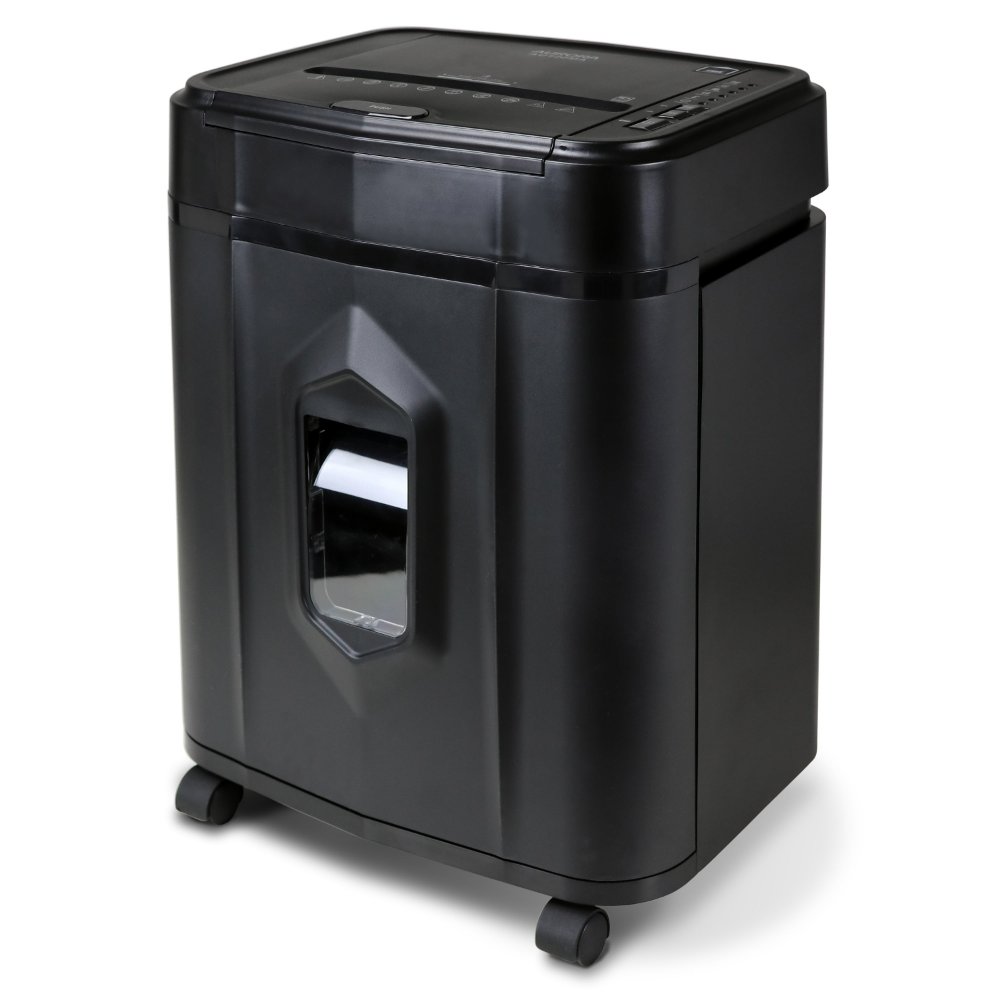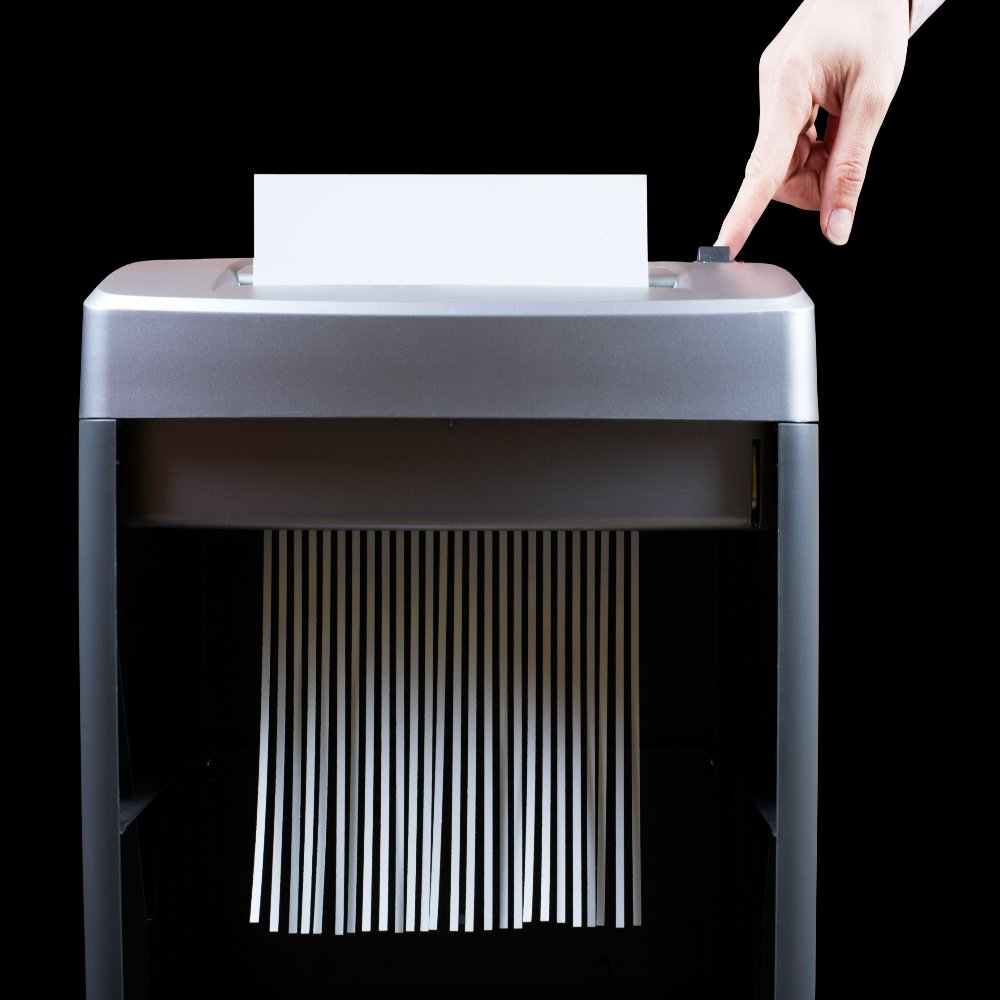Types of Paper Shredders and Their Security Levels
When it comes to protecting sensitive information, understanding the different types of paper shredders and their security levels is crucial. Generally, there are three main types of shredders: strip-cut, crosscut, and microcut paper shredders.
Strip-cut shredders slice documents into long, vertical strips. They offer the lowest level of security and are suitable for non-sensitive data. This type may be appropriate for general home use where privacy is a concern but not paramount.
Crosscut shredders, also known as confetti-cut, cut paper into small pieces in two directions. This creates shorter strips, enhancing security. They are better suited for personal or business settings with moderate security needs.
Microcut paper shredders stand out for their high-security level. They cut paper into very tiny particles, making it nearly impossible to piece information back together. If you’re dealing with highly confidential documents, a microcut shredder is the ideal choice.
Each type corresponds to different levels on the security scale defined by DIN (Deutsches Institut für Normung). Strip-cut shredders typically fall into level P-1 or P-2, crosscut into levels P-3 or P-4, while microcut paper shredders offer superior protection at levels P-5 to P-7.
Choosing between these types can depend on the sensitivity of the documents you are disposing of and the degree of security you require. It’s vital to assess your needs and risks when selecting a shredder. For high-security environments, such as government offices or research labs, a microcut paper shredder is the go-to equipment to ensure the confidentiality of information. For less stringent security requirements, crosscut or strip-cut options may suffice.

Key Benefits of Using a Microcut Paper Shredder
Using a microcut paper shredder brings several advantages. First, it provides the utmost security. By shredding documents into tiny particles, it ensures sensitive information remains confidential. This is critical for personal information, business secrets, or any data protection needs.
Moreover, a microcut paper shredder supports compliance with privacy regulations. Many industries have strict rules for handling personal data. A shredder of this caliber helps companies meet legal requirements, avoiding potential fines and damaged reputations.
Another benefit is the reduced risk of identity theft. With identity fraud on the rise, shredding documents with a microcut shredder becomes an essential step in safeguarding personal information. The tiny size of the shreds makes it nearly impossible for thieves to reconstruct documents.
In addition, disposal efficiency is another key advantage. Microcut shredders produce compact waste, which means less volume and reduced disposal costs. This makes them not only secure but also cost-effective and environmentally friendlier by minimizing waste.
Lastly, peace of mind is an invaluable benefit. Knowing your confidential documents are disposed of securely allows you to focus on other aspects of your work or life without concern for information breaches.
In choosing a microcut paper shredder, weigh these benefits against your security needs. For maximum security and efficient document disposal, a microcut shredder is an excellent investment.
How a Microcut Shredder Works: Cutting Mechanics
Understanding how a microcut paper shredder functions is crucial when considering security. The cutting mechanics of a microcut shredder are quite advanced. Inside the machine, a series of sharp, precise blades work together to dice paper into tiny pieces. These blades rotate rapidly, ensuring every document fed into the shredder is cut beyond recognition.
Each sheet of paper passes through a set of cutting rollers. These rollers consist of intertwined, knife-like teeth that are spaced closely together. As the rollers spin, they slice the paper in multiple directions. This creates confetti-like particles, much smaller than what crosscut or strip-cut shredders produce.
The cutting process is designed to be thorough. It targets the paper in both vertical and horizontal patterns, breaking it down into minute particles. These particles usually measure less than 5 mm squared, adhering to high-security standards.
A microcut shredder’s engine and gears are also built for endurance. They need to provide consistent power to the blades. This ensures the shredder can handle continuous shredding without overheating or jamming. The shredder’s efficiency is a result of these well-crafted internal components.
Finally, a microcut paper shredder includes a waste bin. This bin collects the tiny shreds and needs to be emptied less often than those for other shredder types. This is because the micro-particles take up minimal space, allowing more shredding before disposal is required.
In summary, the cutting mechanics of a microcut paper shredder deliver unparalleled security. This is achieved by complex blades, strong motor power, and a compact waste system. These features make it an asset in any high-security environment.

Ideal Use Cases for Microcut Paper Shredders
Microcut paper shredders shine in situations where top-notch security is non-negotiable. Here are some ideal use cases:
- Government Agencies: They handle highly sensitive data that requires utmost security. A microcut shredder ensures that classified documents are destroyed beyond reconstruction.
- Healthcare Facilities: These entities manage a vast amount of personal health information. The HIPAA requires protection of such information, and microcut shredders are vital for compliance.
- Financial Institutions: Banks and investment firms possess confidential financial records. Microcut shredders help prevent data breaches and financial fraud.
- Law Firms: Attorneys often deal with sensitive client documents. Microcut shredders help in maintaining attorney-client confidentiality.
- Research and Development Departments: Cutting-edge ideas and prototypes need to stay secret. Microcut shredders safeguard intellectual property effectively.
- Corporate Offices: Business plans, employee records, and internal reports all require protection. With a microcut shredder, these documents are kept safe from competitors.
- Home Offices: For individuals working with sensitive documents at home, a microcut paper shredder preserves personal and business privacy.
These use cases demonstrate the necessity of a microcut paper shredder in any situation where document security could be compromised. Opting for a microcut shredder is a proactive step in protecting sensitive information.
Additional Security Measures in Microcut Paper Shredders
While the fine shred size of a microcut paper shredder offers excellent security, additional features can enhance this further. Here are some security measures often found in these shredders:
- Auto Start and Stop: Many shredders have sensors that automatically start the blades when paper is inserted and stop them when the job is done. This limits the risk of information being left unshredded.
- Overload Protection: This feature prevents the shredder from operating if too many sheets are fed at once, reducing the chance of jams that could compromise security.
- Thermal Overload Protection: Protects the motor from overheating, ensuring consistent, reliable shredding and reducing downtime.
- Safety Locks: Some shredders come with locks to prevent unauthorized use, keeping sensitive materials secure until they can be shredded.
- Bin Full Indicator: Alerts users when the collection bin is full, which helps maintain workflow and stops overflow. This ensures all shredded material is well-contained.
- Tamper Evident Bags or Bins: For highly secure environments, some shredders pair with bags or bins that show evidence of tampering to further secure the waste.
- Noise Level Reduction: Lower noise levels can be a security feature, as it makes it difficult for any eavesdropping on shredding operations.
These additional features ensure that the microcut paper shredder not only destroys documents thoroughly but also provides comprehensive security measures to protect sensitive information at every step of the disposal process.

Comparing Microcut vs. Crosscut vs. Strip-Cut Shredders
Choosing the right type of paper shredder can seem daunting at first. However, by comparing microcut, crosscut, and strip-cut shredders, you can decide which best fits your security needs.
Strip-cut shredders are the most basic form of shredders. They cut documents into long, thin strips. These strips can be quite wide, making it easier for sensitive information to remain legible. Strip-cut shredders are often used in less secure areas or for materials that are not highly confidential.
Crosscut shredders provide a mid-level security option. They cut paper into short, narrow pieces. This makes it harder to piece documents back together compared to strip-cut shredders. Crosscut shredders are a good fit for most office environments where a balance between security and cost is desired.
When it comes to maximum security, microcut paper shredders are the top choice. They turn documents into very small particles. It becomes nearly impossible to reassemble the pieces and read the information. Microcut shredders are ideal for high-security areas, like government offices or research facilities.
Here’s how they compare in brief:
- Security: Microcut offers the highest, crosscut is moderate, and strip-cut is the lowest.
- Cost: Strip-cut shredders are generally less expensive, while microcut shredders are on the higher end due to their advanced security features.
- Maintenance: Microcut and crosscut shredders require more frequent maintenance than strip-cut ones, due to their complex cutting mechanics.
- Waste Management: Microcut shredders produce less waste volume, making them more efficient and environmentally friendly.
In summary, if your main concern is high-level security and you’re dealing with highly sensitive data, a microcut paper shredder is the best investment. If you require less security and are looking for a cost-effective option, a strip-cut shredder may suffice. Crosscut shredders stand in the middle, offering a good compromise between security and price.
Maintenance Tips for Your Microcut Paper Shredder
Maintaining your microcut paper shredder is vital for optimal performance and longevity. Follow these simple tips to ensure your shredder runs smoothly:
- Regular Cleaning: Dust off the blades after each use to prevent buildup. Use a soft brush or cloth.
- Oil Regularly: Apply shredder oil to the blades every few uses. This keeps them sharp and ensures efficient cutting.
- Avoid Overfeeding: Insert only the recommended number of sheets per pass to avoid jams.
- Empty the Bin: Clear out the waste bin before it gets too full. This prevents jams and maintains shredding efficiency.
- Quality Materials: Only shred materials that are safe for your shredder. Avoid metal, plastic, and cardboard.
- Sharpen the Blades: Consider professional sharpening services if the cuts become less precise over time.
- Read the Manual: Follow the manufacturer’s guidelines for care and maintenance. Every shredder model is different.
- Regular Inspection: Check for loose parts, signs of wear, or damage. Address issues promptly to avoid further complications.
Adopting these maintenance practices will extend the life of your microcut paper shredder. A well-cared-for shredder ensures the highest level of document security.
Selecting the Right Microcut Paper Shredder for Your Needs
Choosing the right microcut paper shredder can be vital for your security needs. Here are some factors to consider when making your selection:
- Security Level: Assess the sensitivity of the documents you will shred. More confidential documents will require a shredder with higher DIN levels.
- Volume of Use: Consider how much you will use the shredder. High volumes call for a more durable, robust machine.
- Shred Speed: If time efficiency is important, look for a shredder that can process more sheets per minute.
- Bin Capacity: Larger bins mean less frequent emptying, so for heavy usage, a larger bin could save time.
- Safety Features: Features like auto start/stop and safety locks can be critical, especially in environments with children or non-users.
- Price Range: Balance your budget with the required security level. Higher security comes at a higher cost.
- Warranty and Support: Choose a shredder with a good warranty and customer support for peace of mind.
- Size and Mobility: Consider the physical space and whether you need to move the shredder around.
Take your time to compare different models and brands. Look for reviews and ratings to gauge reliability. Matching the shredder to your specific needs will ensure that your sensitive documents are securely disposed of every time.